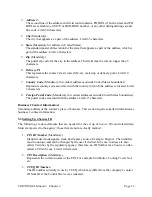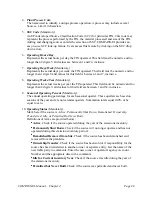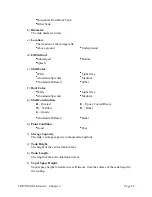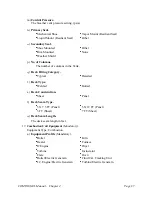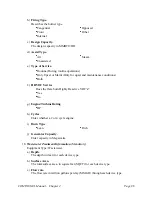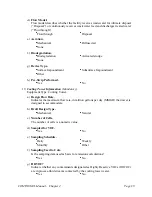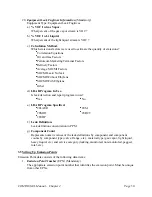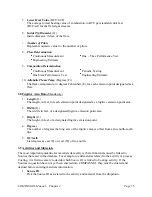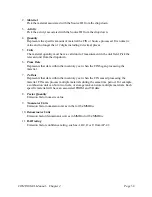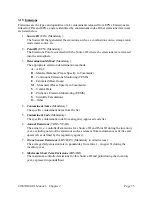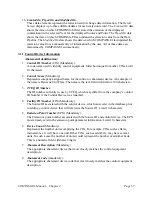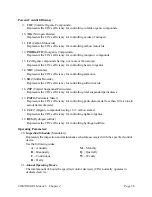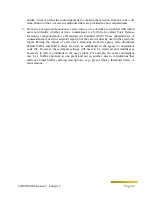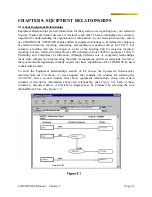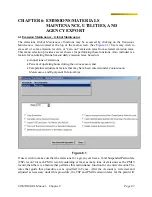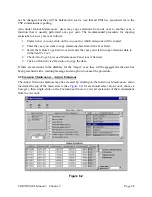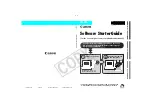
COMPASS-EI–Manual – Chapter 4
Page
33
5.
Lower Heat Value
(BTU/SCF)
The average lowest heating value of combustion, in BTU per standard cubic feet
(BTU/scf) for the flared gas streams.
6.
Inside Tip Diameter
(ft.)
Inside diameter, in feet, of the flare.
7.
Number of Pilots
Represents numeric value for the number of pilots.
8.
Flow Determination
Continuous Measurement
One – Time Performance Test
Engineering Estimate
9.
Composition Determination
Continuous Measurement
Periodic Testing
One Time Performance Test
Engineering Estimate
10.
Adiabatic Flame Temp
(Degrees (F))
The flame temperature, in degrees Fahrenheit (F), for each emission point designated as a
flare.
3.8 Fugitive Area Data
(Mandatory)
1.
Length
(ft.)
The length, in feet, for each emission point designated as a fugitive emission point area.
2.
Width
(ft.)
The width, in feet, of a designated fugitive emission point area.
3.
Height
(ft.)
The height, in feet, of a designated fugitive emission point.
4.
Degrees
The number of degrees the long axis of the fugitive area is offset from a true north-south
line.
5.
Of North
List degrees as east (E) or west (W) of true north.
3.9 Activities and Materials
The most important guideline for materials data entry is that all materials must be linked to
Sources that exist in the database. For example, to add material related to the activity or process
Coating, it is first necessary to decide which
Source ID
is linked to Coating activity. If the
Sources in question have not yet been entered into COMPASS-EI, they must be entered and
defined before entering materials information.
1.
Source ID
Pick the Source ID associated to the activity and material from the dropdown.





